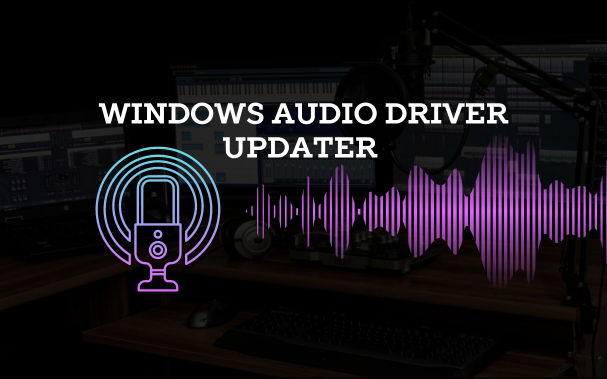Windows Audio Driver Updater Tools: How to Choose and Use Them
Are you struggling with audio issues on your Windows device? If you’ve experienced anything from crackling sounds to complete audio failure, you might be dealing with outdated drivers. But don’t worry! You’re not alone, and there’s a solution. In this article, we’ll explore the best Windows Audio Driver Updater Tools, guiding you on how to choose and use them effectively for an improved audio experience.

Understanding Audio Drivers
First, let’s clarify what an audio driver is and why it’s essential. An audio driver serves as the communication link between your operating system and audio hardware, such as your sound card. When these drivers are outdated or corrupted, the audio quality can suffer significantly, leading to an unsatisfactory listening experience.Using a reliable Driver Updater can help keep your audio drivers up to date, resolving issues and improving sound quality.
Choosing the Right Audio Driver Updater
When selecting an Audio Driver Updater, several factors come into play:
- Identify Your Needs
Consider what features are most important to you. Do you prefer a user-friendly interface, or are you looking for advanced features like backup options? Assess your comfort level with technology—some tools are designed for beginners, while others cater to more advanced users. - Research Options
Take the time to explore the available options. Here are some popular tools to consider:
- Driver Booster: Known for its extensive database, it quickly identifies outdated drivers and provides a one-click update option.
- IObit Driver Booster: Offers a free version with basic features and a paid version that unlocks advanced functionality.
- Auslogics Driver Updater: Not only does it update your audio drivers, but it also ensures all device drivers are functioning optimally.
- Read Reviews and Testimonials
User feedback is invaluable when choosing a tool. Look for reviews that detail the ease of use, effectiveness, and reliability of the software. Websites like TechRadar and CNET often provide comprehensive reviews and comparisons. - Trial Versions
Many tools offer trial versions. Take advantage of these to assess the functionality without committing financially. This will help you gauge whether a tool meets your needs before purchase. - Check Compatibility
Ensure that the updater tool is compatible with your specific version of Windows and your audio hardware. Compatibility is crucial, as using a tool that doesn’t support your setup can lead to further issues.
Using Your Chosen Updater
Now that you’ve chosen your Audio Driver Updater, let’s walk through the steps to get started:
Download and Install
Follow the installation instructions provided by the software. Most tools are straightforward to install, but always be cautious of any additional software bundled with the installer. Uncheck any boxes that suggest installing unrelated programs.
Run the Updater
Open the tool and initiate a scan of your system. This scan will identify outdated drivers across your system, not just your audio drivers. This is usually a quick process, taking only a few minutes.
Review Available Updates
After the scan, the tool will present a list of available updates. Take the time to review this list carefully. Look for critical updates that specifically mention improvements to audio quality or stability.
Install Updates
Select the updates you wish to install. Most tools allow for one-click installation, which simplifies the process significantly. Be sure to install any audio driver updates promptly, as they are essential for optimal sound quality.
Restart Your System
After the updates are installed, restart your computer. This step is crucial, as it ensures that all changes take effect. You might also want to check your audio settings to ensure everything is functioning as expected.
Conclusion
Maintaining up-to-date audio drivers is essential for a great audio experience on your Windows device. By carefully choosing the right Windows Audio Driver Updater Tool and following the steps outlined above, you’ll be well on your way to enjoying crisp, clear sound. So go ahead—take control of your audio experience and elevate your listening game!
